How and what to feed currants after harvesting in July
Red, black and white currants ripen by the end of June. They are good fresh and processed, and are used for making juices and jams. In order to reap a rich and tasty harvest every year, it is important to feed the bushes using organic matter and mineral mixtures. One of the fertilization stages begins in July, a few days after harvesting. Let's look at how to feed currants and how to do it correctly.
Do currants need fertilizing after harvesting in July?
Feeding currants in July is a must. Properly applied mineral and organic components help make the bush’s immunity stronger and its appearance healthier.
After harvesting, the currants are weakened and require additional and balanced nutrition. If it is not given, the next year's yield will decrease, and the risk of disease or frost will increase with the onset of autumn and winter. If for some reason it was not possible to feed the plant in July, it is recommended to do this in early August.
What feeding does the plant need in July?
Gardeners pay attention to mineral complex and organic fertilizers. Use ready-made purchased formulations or folk remedies. In just a month, the bush is fertilized no more than 2 times. The interval between procedures is 2-3 weeks.
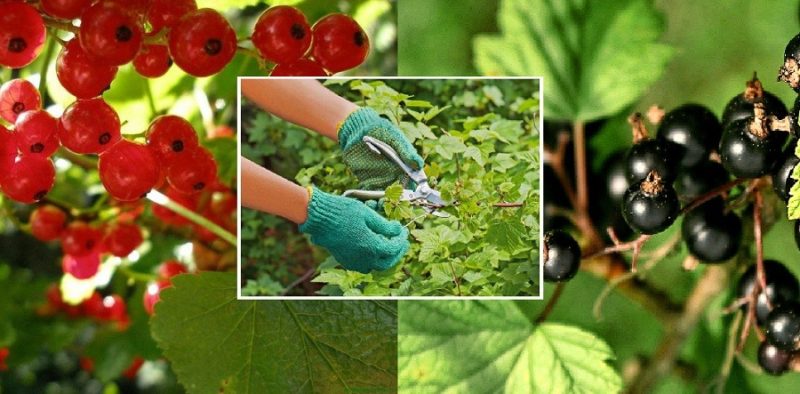
Symptoms of deficiency
With a deficiency of microelements, the color and shape of leaves, shoots, and fruits change. In mid-summer, a lack of potassium is especially noticeable: the leaves become yellow and dry, slowly fall off, the lower leaves of young shrubs may become covered with a purple or brown coating.
Potassium deficiency is caused not only by improperly selected fertilizers, but also by a high content of lime in the soil.
Attention! Symptoms of iron and magnesium deficiency also appear: the leaves become covered with yellow-brown sores, which increase in size over time. If measures are not taken, the currant will shed its leaves and die.
Currants also suffer from a lack of phosphorus. The first symptoms are deformation of shoots and leaves, their drying out. The root system weakens and stops developing.
A lack of microelements leads to the appearance of various diseases, especially if the summer is hot and humid. Currants are affected by powdery mildew, anthracnose or septoria.
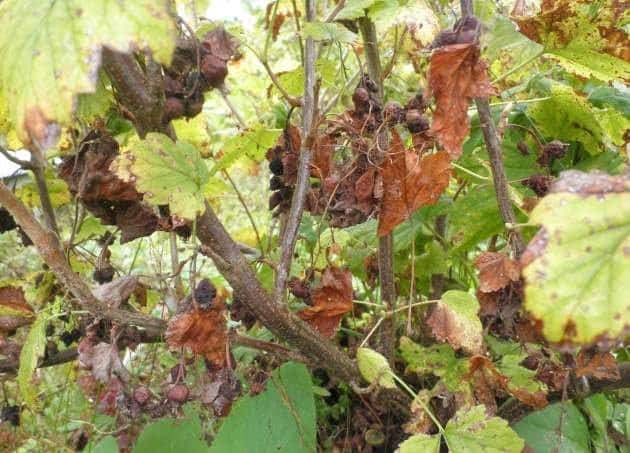
When to feed currants in July
It is recommended to do this immediately after fruiting. Early varieties bear fruit closer to the middle of the month, late varieties - at the end. After harvesting, 3–5 days should pass. For feeding, choose a dry and warm day.
You cannot fertilize currants during rain, extreme heat and wind. The optimal time for the procedure is early morning or evening, after 20:00.
Frequency and abundance of fertilizers
Fertilize no more than 2 times a month. The following procedure is carried out only at the end of August to prepare the bush for cold weather.
Attention! The frequency and abundance of applying each fertilizer is individual. When using ready-made formulations, it is recommended to carefully read the information on the packaging. The manufacturer indicates the dosage and frequency of application.
The abundance depends on what fertilizers are used and when they were last applied.For example, mineral complexes and preparations are used only if at least 2 months have passed since the previous feeding, and organic ones - if the currants were last fertilized with organic matter a year ago.
An excess of fertilizers is just as dangerous as a lack. If you overfeed currants, they will get sick and drop leaves and fruits.
What to feed
Some summer residents prefer ready-made complex fertilizers, others prefer folk and environmentally friendly products. Let's consider how to feed currants after harvesting in July.
Mineral products
For comprehensive restoration of shrubs, superphosphate is used. The following mixture is effective to use: 20 g of superphosphate + 20 g of potassium sulfate + 10 l of water. The elements are dissolved in water, mixed and left for 30 minutes. The resulting solution is poured under the root of the plant or into specially prepared holes. They are pulled out around the bush at a distance of 20 cm. Before adding the composition, the currants are watered generously with warm water. The solution is used immediately; it cannot be stored.

Gardeners love ready-made OMU fertilizer for berries and fruit crops. It does not contain chlorine and is enriched with microelements and humic acids. Apply 30 g of the substance per 1 m²: embed it in the soil, then water it abundantly.
Nutrisol is a popular ready-made fertilizer. It contains nitrogen, potassium, phosphorus, magnesium and zinc. Dissolve 25 g of the substance in 10 liters of water and water the plant. The product increases the immunity of currants to external adverse factors.
Organic compounds
Organic matter is used in July only if the soil is severely depleted. In other situations, it is better to use it in early spring, when the plant has just woken up.
In summer, gardeners use a solution of wood ash.It strengthens the bush’s immunity, protects against diseases and pests, and restores metabolic processes. For 5 liters of water, 80 g of dry ash is required. Currants are sprayed from a spray bottle early in the morning. The solution is also used as root feeding: water the plant at the root.
Compost is effective in use. Natural organic fertilizer does not harm the environment and is harmless to humans, so it is used even during fruiting. Under each bush, add 1 bucket of compost, after loosening the soil. Then the soil is sprinkled with mulch: grass, hay, sawdust, wood chips, pine needles.
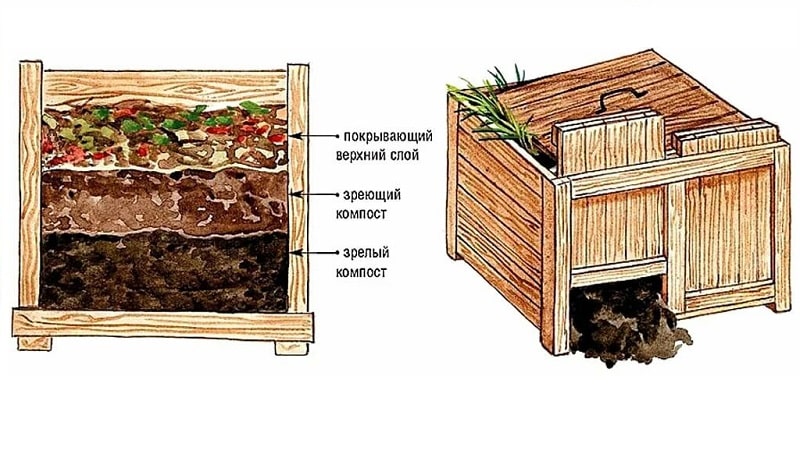
Folk remedies
The cost of folk remedies is zero, so they are especially popular among gardeners. Potato peelings are used to fertilize currants. They are washed with running water and placed in a solution of potassium permanganate for disinfection for several minutes. Then blot with dry wipes and take them out into the fresh air to dry. The peelings are dropped under each bush. They quickly decompose, the starch useful for currants is absorbed by the root system, and the growth of weeds is inhibited.
In warm weather, the plant is fed with yeast. 30 g of dry yeast are diluted in 1 liter of clean water, 100 g of granulated sugar are added and mixed. Pour the mixture into 5 liters of water and put it in a warm place for 3 days, stirring constantly. After 1 liter of concentrate, dilute it in 10 liters of water. Shrubs are watered with the solution at the rate of 5 liters per plant. After a week, ash is added to the soil. It compensates for the lack of potassium that may occur due to root feeding.
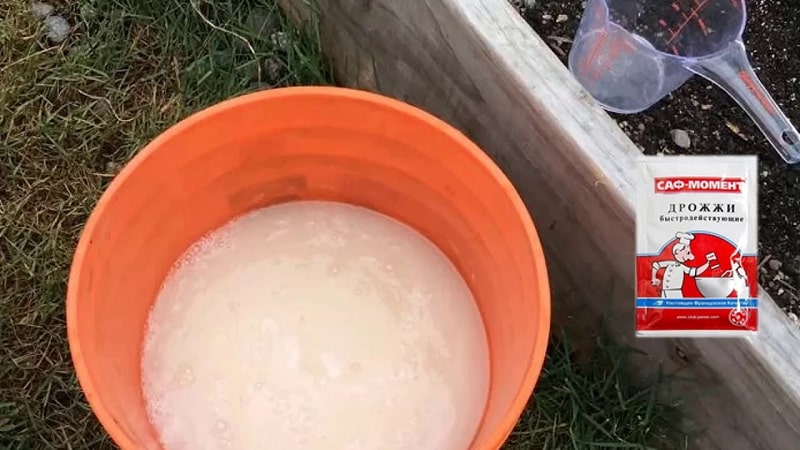
How to fertilize black, red and white currants after fruiting
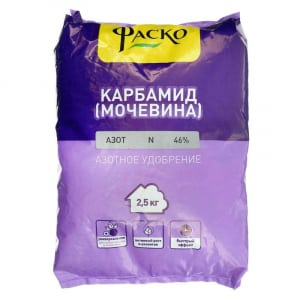
Black currants are greatly depleted after fruiting, so they are recommended feed complex fertilizer “Zircon” or “Gumi-Omi”. The products relieve the plant from stress and help it recover faster. They are diluted in water following the directions on the package.
Black currants are fed with urea solution. Take 20 g of the substance per 10 liters of water, mix and pour into the tree trunk circle. Urea replenishes iron deficiency and protects shrubs from chlorosis.
Red currants love phosphorus, so they are fertilized with phosphate rock. The substance increases the frost resistance of the root system and improves the quality of the future harvest. Add phosphate rock around the bush at the rate of 400 g per plant. In total, 1-2 such feedings are carried out during the summer; before the procedure, the soil is loosened and weeds are removed.
Reference. Fertilizers based on humic acids are useful for all types of currants. These are fertilizers “Krepysh”, “Gumat + 7”. Thanks to humates, minerals are absorbed faster.
White currant unpretentious in care, but after harvesting it requires feeding with diammophos. 15 g of the substance are dissolved in 5 liters of water and used for 2 bushes. Diammofoska contains nitrogen, potassium and phosphorus, which are required by the plant.
Choosing feeding in the middle zone
In the middle zone, organic fertilizers are often applied. They protect currants from pests, strengthen the plant’s immunity and nourish the soil. An infusion of bird droppings is popular in use.
1 kg of bird droppings are diluted in 12 liters of water, left for a week in a dark place, after 0.5 liters of infusion, diluted in 5 liters of water and water the plant. Fertilizer is applied into special grooves, which are finally sprinkled with loose and light soil. It is recommended to use rotted bird droppings, as fresh ones cause burns to the plant.
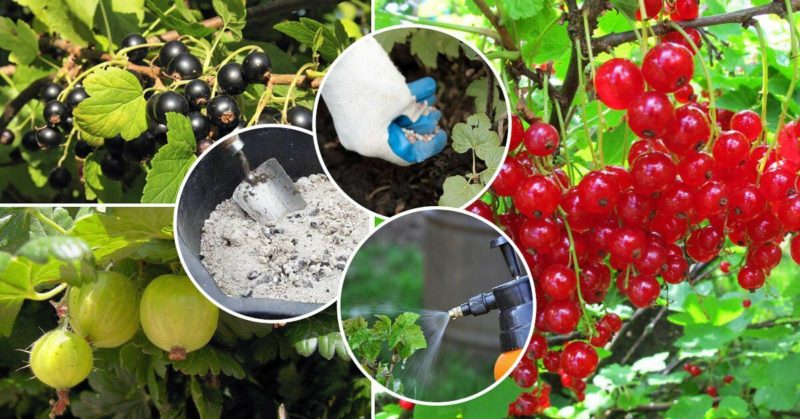
In the Urals
The soil in the Urals is not fertile, so gardeners use complex fertilizers. Their goal is to restore the bush after stress, to make the soil more nutritious and rich.
Use fertilizer “Berry bushes” from “Fasco”. It contains potassium-phosphorus complex and amino acids. The fertilizer is easy to prepare and easily absorbed by the plant. The drug is purchased at garden stores and prepared according to the instructions on the package.
In Siberia and other regions
To protect currants from changeable weather and extend their life, gardeners alternate mineral and folk remedies. 15 g of superphosphate and 10 g of potassium salt are placed under the bush.
After 2 weeks, the bushes are sprayed with a folk remedy: 3 parts of dandelions and nettles are poured with 8 parts of water and left to ferment in a warm place. When the mixture stops foaming, prepare a solution from 1 liter of infusion and 10 liters of water. Spray currant leaves and shoots twice a week. The herbal solution is used to prevent diseases.
This is interesting:
The most effective measures to combat bud mite on currants in spring
How to feed currants after harvest
Summer residents advise feeding red, black and white currants using root and foliar methods.
This way the bush will receive vitamins and microelements not only from the inside, but also from the outside.
The root way
For root feeding, prepare grooves up to 10 cm deep - this way more nutrients will reach the roots. Just 4-5 grooves are enough for 1 bush. Fertilizers are poured into the holes and sprinkled with loose soil.
Pre-water the currants generously: in a humid environment, microelements are absorbed faster. Dry fertilizers are scattered evenly near the bush.
Foliar
The foliar method is spraying with a solution from a spray bottle. As a result, the substances fall directly onto the leaves and are absorbed faster. Foliar fertilizers are especially effective if currants suffer from a lack of microelements and urgent action is required.
Treat the bushes in the morning, while there is no sun. Otherwise, the solution will quickly evaporate from the leaves.
Advice from experienced gardeners
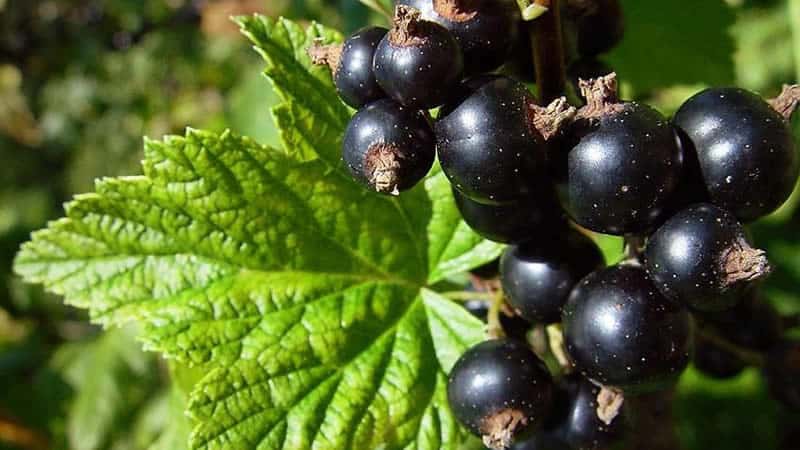
Feeding currants after fruiting gives a noticeable effect if you follow the recommendations:
- do not fertilize currants if the air temperature is above +27° C;
- use less nitrogen and more potassium-phosphorus compounds;
- disinfect containers before preparing infusions;
- use water-soluble fertilizers;
- do not store prepared solutions for longer than 2 hours;
- alternate organics and minerals, ready-made and folk remedies;
- After the procedure, water the bush generously.
Conclusion
July feeding of currants is required to strengthen the immunity of the bush and saturate the soil with nutrients. Summer residents use a solution of yeast or urea, phosphate rock, superphosphate, wood ash, and potato peelings.
Liquid fertilizers are applied into special grooves near the trunk, dry fertilizers are placed under the bush. The interval between procedures is 2-3 weeks. Before fertilizing, the soil is loosened and weeds are removed, and then watered abundantly.